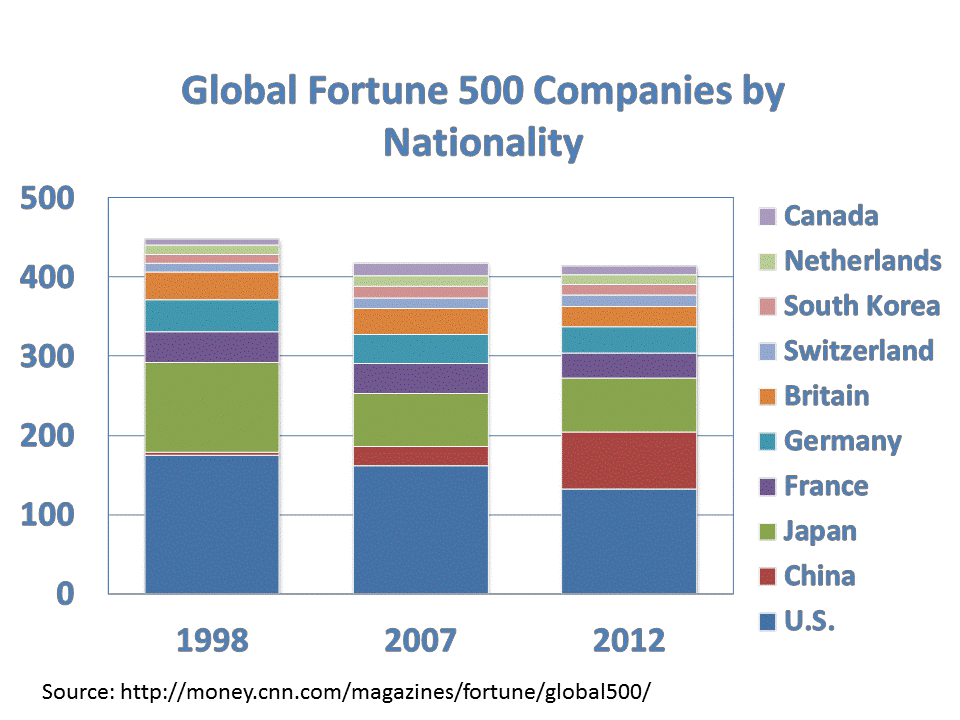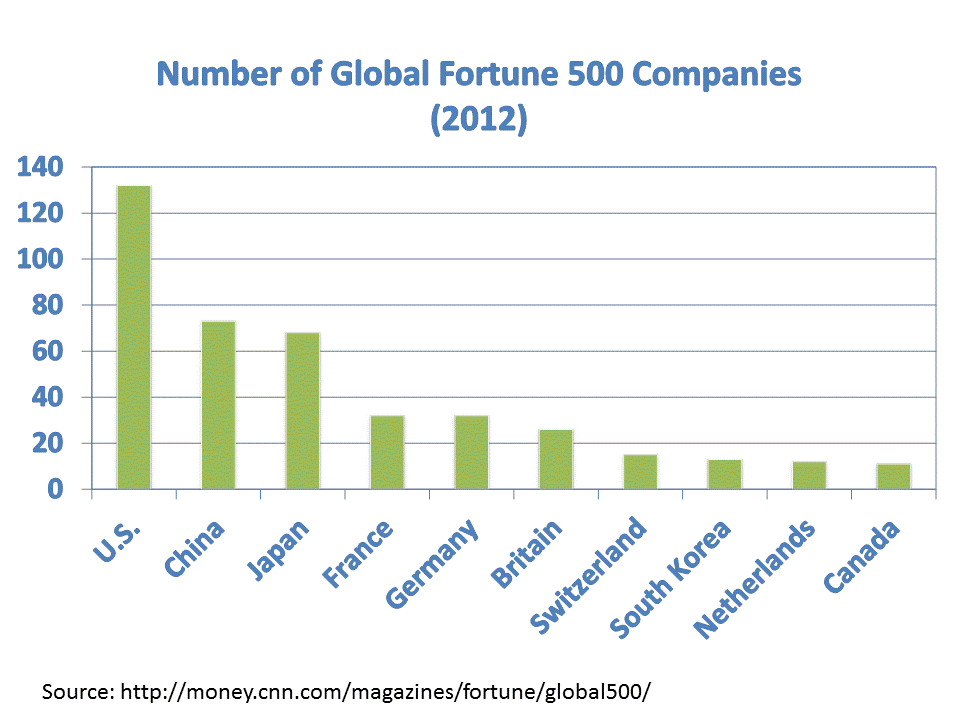For those of you who love competition, here’s a snapshot of a global competitive landscape. Fortune Magazine publishes the ranking of Global Fortune 500 every year. I took the latest (2012 ranking) and rank ordered top 10 countries that had the largest piece of the pie.
The way Fortune determines its ranking is that they compare annual revenues in U.S. dollars. I counted the number of companies in the ranking by nationality and came up with the chart above. To make things more interesting, I also looked at how these countries stacked up in 1998 and 2007.

It revealed a very interesting picture. Here are some of my observations.
1. Emergence of China: in 1998, there were only 4 Chinese companies. The largest was Bank of China at 174th out of 500. In 2012, there are 73 Chinese companies. That’s the fastest growth any country has seen during these years in the ranking. As a result, who’s got bumped off the top 10 list? Italy. And Canada may be on its way out, either by the emergence of Australia (11th place today) or India / Brazil (both tie at 13th).
2. Fragmentation: In 1998, the top 10 countries had over 90% share of Global Fortune 500. In 2012, their share is reduced to 82.8%. In 1998, there were 23 countries representing 500 companies. Today there are 35 countries. Established nations are being squeezed from emergine ones. In particular, the following countries are growing fast. Russia (1 company in 1998, 4 in 2007, and 7 in 2012), Brazil (5 in 1998, 5 in 2007, and 8 in 2012), and India (1 in 1998, 6 in 2007, and 8 in 2012). No surprises here.
3. Decline of Japan: In 1998, there were 113 Japanese companies listed in Global Fortune 500. There were 67 in 2007 and 68 in 2012. This is a tricky result for 2012. Let’s remember that the Japanese yen increased its value by more than 30% against the U.S. dollar in the last 5 years. So their revenues in U.S. dollars in 2012 may well be inflated. In other words, even if a company has reduced its revenue in yen since 2007, it may have the same or a higher revenue in dollars just because the yen appreciated.
4. The impact of weakening US dollar: The chart shows the U.S. lost 30 “Global Fortune 500” companies from 2007 (162 companies) to 2012 (132). The reason for the loss is partly due to the inflated revenues of non-U.S. companies. Between 2007 and 2012, the US dollar weakened against 7 out of 10 major currencies that represent most of top 10 and emerging countries. It puts the U.S. companies at disadvantage in the comparison like this.
Emerging nations are accelerating growth and taking shares away from established nations. We are facing more diverse and dynamic competition than before. Also we must pay attention to how exchange rates are moving in the world economy. A weak currency can attract foreign tourists, customers and investors. But it also gives a haircut to domestic revenues and profits across the board.



